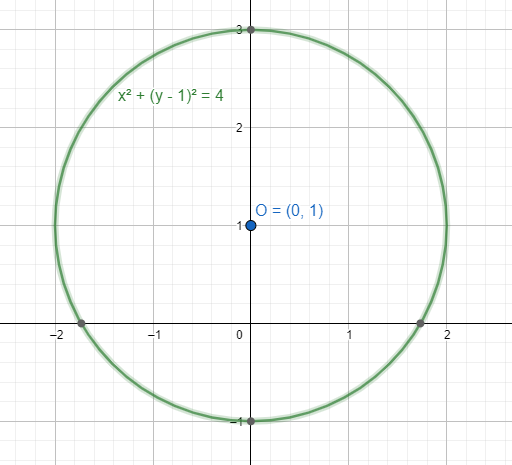Question
Question: How do you graph \(\left| z-i \right|=2\) in the complex plane?...
How do you graph ∣z−i∣=2 in the complex plane?
Solution
We first assume the value of the complex number z=x+iy. We place the value in the equation z−i. Then we find the modulus value of z−i. We equate with 2 and then take the square of the equation. The equation becomes the form of a circle. We plot the equation in the graph.
Complete step-by-step solution:
We have to find the graph of ∣z−i∣=2 in the complex plane.
Here z works as a complex number. So, we assume the value as z=x+iy. Here x and y are real constants and i works as the imaginary number.
The function of ∣∣ is the representation of modulus value.
For general complex number z=x+iy, the modulus value will be ∣z∣=x2+y2.
Now we find the value of z−i=(x+iy)−i=x+i(y−1).
Now we find the modulus value of z−i.
∣x+i(y−1)∣=x2+(y−1)2.
We have been given the equation ∣z−i∣=2.
We place the values and get x2+(y−1)2=2.
We take the square on the both sides of the equation x2+(y−1)2=2 and value of the equation becomes x2+(y−1)2=22=4.
The equation is an equation of a circle.
We equalise x2+(y−1)2=4 with the general equation of circle (x−a)2+(y−b)2=r2.
For the general equation we have the centre as (a,b) and the radius as r.
Now we find the centre and the radius for x2+(y−1)2=22.
We have the centre as (0,1) and the radius as 2.
Now we plot the equation in the graph.

Note: We need to remember that in the complex plan the unit circle representation is always applicable for modulus values. The modulus value eliminates the imaginary part of the equation.
